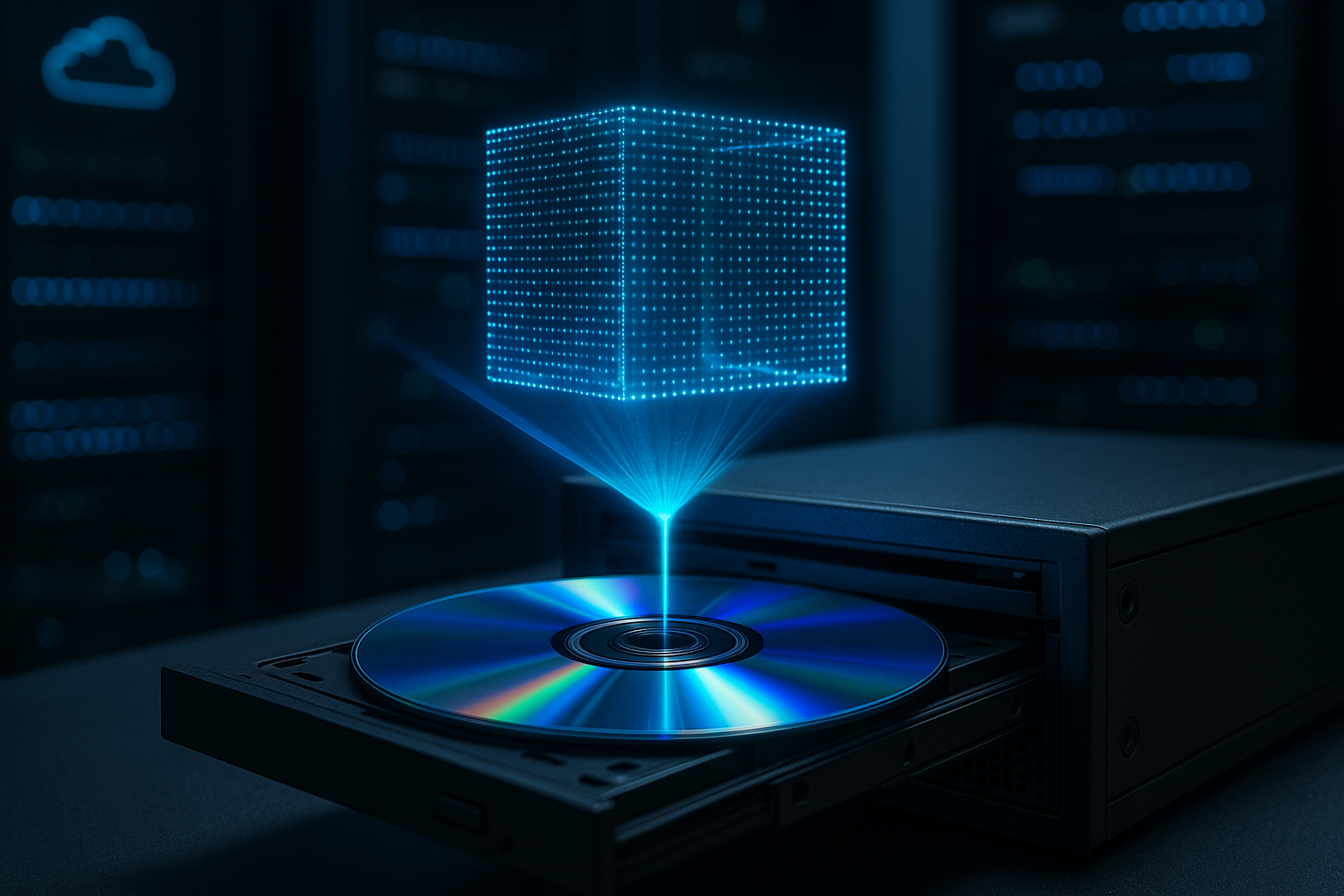Tackling the Terabytes: The Emergence of Holographic Storage Devices
Holographic storage devices are sweeping onto the tech scene, promising to revolutionize our data storage capabilities. They offer a fresh perspective on an age-old problem—how do we efficiently store our ever-growing data hoards without sacrificing speed or reliability? Let's take a deep dive into the world of holographic storage.

A Brief History of Data Storage
The world of data storage has come a long way since the early days of punch cards and tape drives. The 1950s saw the introduction of magnetic tapes, which were then superseded by hard disk drives (HDDs) in the 1960s. Fast forward to the 1980s, and the advent of optical discs brought another leap in storage capacities.
With the turn of the century, solid-state drives (SSDs) took center stage, offering lightning-fast access times and improved durability. Nevertheless, even SSDs have their limits, and as we move into the era of big data, a new solution is needed.
The Dawn of Holographic Storage
Enter holographic storage, a technology that has been in the making for several decades but is only now reaching a point of commercial viability.
Unlike traditional storage methods that store data on the surface of a disc, holographic storage utilizes the entire volume of the medium. This is achieved by using lasers to create 3D holograms within a photosensitive material—each hologram representing a chunk of data.
This approach allows for storage capacities that far surpass current methods. For instance, a holographic disc roughly the same size as a DVD could potentially hold up to 4 terabytes of data!
The Current State of Holographic Storage
In recent years, significant strides have been made in the field of holographic storage. Companies like InPhase Technologies and Optware have been pioneering the technology and bringing it closer to market.
InPhase Technologies, for example, has developed a holographic storage system known as Tapestry, which can store 300 gigabytes of data on a single disc with a transfer rate of 20 megabytes per second. Meanwhile, Optware has created the Holographic Versatile Disc (HVD), boasting an impressive 3.9 terabytes of capacity.
The Impact and Future of Holographic Storage
The prospect of holographic storage brings with it a potential revolution in the data storage industry. With its unprecedented storage capacities, this technology could be the answer to the data explosion we are witnessing in areas like cloud computing, AI, and IoT.
However, the technology is not without its challenges. High production costs and the need for new reading and writing equipment are significant hurdles that must be overcome.
Despite these challenges, the potential benefits of holographic storage are too great to ignore. As we continue to generate data at an unprecedented rate, this technology could very well be the future of data storage.
Wrapping Up
Holographic storage devices present a tantalizing vision of the future. With their immense storage capacities, these devices could redefine our relationship with data. But as with all revolutionary technologies, only time will reveal their true potential.
In the meantime, we’ll keep a close eye on this exciting field, eager to see how it develops and what impact it will ultimately have on our digital lives.





